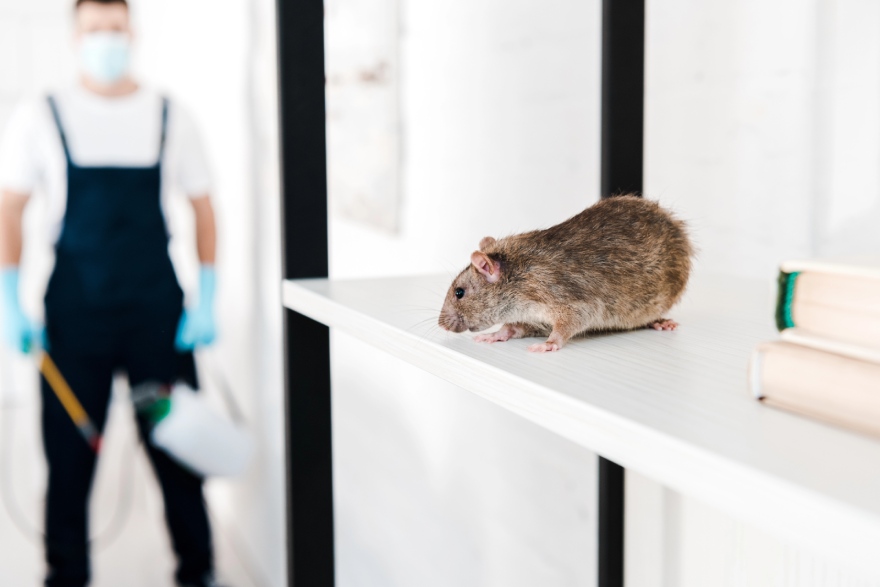- SPECIAL DISCOUNT
- 10% OFF on Full Home Recommendations + Free Consultation
- Excludes insulation services
- Contact Us
- Must mention at the time of booking
Signs It’s Time To Hire A Rodent Control Service In Scottsdale, AZ

Desert living does not stop rodents. In Scottsdale, warmth, irrigated landscaping, and easy roof access give roof rats and mice year-round advantages. The tricky part is that early signs feel small, then the problem jumps from a few droppings to chewed wires and attic odors. Here is how to read the hints, decide when to bring in a rodent control service in Scottsdale, and what a professional plan looks like once you make the call.
Night Noises and Wall Activity
If you hear light, quick scurrying above ceilings after sunset or at dawn, you are not imagining it. Roof rats travel rafters, conduit chases, and fascia runs with gymnastic ease. Mice tend to tick softly in wall voids and under cabinets. Occasional mystery sounds can be pipes or settling, but a pattern of nightly runs points to a living population. When sound comes with scratching near vent stacks or A/C lines, activity is already close to entry points.
Fresh Droppings and Rub Marks
Droppings tell a timeline. Fresh rat droppings are dark, slightly moist, and tapered, while older pellets turn dull and crumble. Mice leave rice sized pellets, often in clusters along baseboards or pantry corners. Grease marks along framing or on attic trusses show repeat travel. If you can wipe a smudge and it returns within a day or two, that path is in regular use.
Food Disturbance and Pet Alerts
Chewed packaging, missing pet kibble, and gnawed fruit on backyard trees are everyday clues. Pets often notice first. A dog fixated on a garage corner or a cat tracking the top of a refrigerator cabinet is worth attention. In Scottsdale, citrus drop and dense shrubs around walls give steady forage, so indoor food discipline matters once signs appear.
Odors, Stains, and Dirty Insulation
An ammonia edge in a closet, ceiling corner discoloration, or gritty dust on water heater tops signals nesting nearby. In attics, flattened, dirty insulation lanes between trusses are common with roof rats. The longer this sits, the more scent builds, which invites new rodents through the same routes even if the originals move on.
Chew Damage and Risk Areas
Wires with nicked jackets, soft gnaw marks on PEX or PVC, and frayed weatherstripping around garage seals are serious flags. Warm chases attract rodents, so check around the furnace, water heater, and laundry hookups. Chew damage escalates costs quickly and can create safety hazards far beyond a simple nuisance.
Exterior Gaps and Vegetation Bridges
Rodent control starts outside. Palm skirts, ivy, and tree limbs touching eaves act like ramps to rooflines. Gaps bigger than a pencil at eaves, A/C line penetrations, and warped garage seals are open doors. If you can see daylight around the garage bottom or feel air at utility lines, you have a path that trapping alone will not fix.
Why DIY Stalls Out
Single traps catch curious individuals, but open entry points act like a revolving door. Loose bait indoors often leads to hidden carcasses and odor. Spray foam without a rodent resistant backing gets chewed. In two story or tile roof homes, safe roof access and thorough sealing are real constraints. If you have repeated captures, recurring noises after quiet spells, or any chew damage on utilities, it is time to call in a team.
What a Professional Plan Includes
Expect a complete inspection inside and out, including attic and roofline access. A written map of entry points, travel routes, and conducive conditions should come first. Sealing happens before or alongside trapping, not after. That means metal flashing, hardware cloth, and copper mesh at quarter inch gaps, tight vent screens, and repaired door seals.
Trapping then targets known runways with correctly oriented snap traps or enclosed snap stations, serviced frequently at the start. Indoors, responsible teams avoid loose rodenticide to prevent odor and protect pets. Outdoors, if baits are used, they live in locked stations as part of a monitored plan.
Attic Cleanup and Reset
When traps go quiet, the work turns to sanitation. Droppings and nesting material carry scent ladders. HEPA vacuuming, surface disinfection, and odor neutralization help prevent a rebound. Damaged insulation can be spot replaced or fully reset. If access gaps were at the roofline, this is also the moment to prune branches off eaves and clear dense shrubs hugging walls.
Scottsdale-specific Tips
Irrigated landscapes keep soil soft and plants lush, which supports outdoor forage. Move fruit trees away from walls where possible and pick fallen citrus promptly. Store bird and pet food in lidded bins. In older neighborhoods with mature palms, trim skirts and keep fronds off roofs. Check sun screens and attic vents after monsoon winds for new gaps.
Rodent Control Pros: Humane Mouse, Rat, Squirrel Removal
Turn late night scratching into silence with Best Pest & Wildlife Control. Our certified team uses humane trapping, precise exclusion, and careful sanitation to stop mice, rats, and squirrels at the source and prevent the next wave. Expect a tailored plan based on a detailed inspection of entry points, nesting sites, and conducive conditions, followed by repairs and, if needed, insulation replacement for a clean reset.
Serving Scottsdale, Denver, and San Diego metro areas and beyond, we focus on lasting results and clear communication. Schedule your free home inspection today.
CONTACT US FOR A FREE QUOTE
Feel free to give us a call or send us an email with any questions or comments you have.
